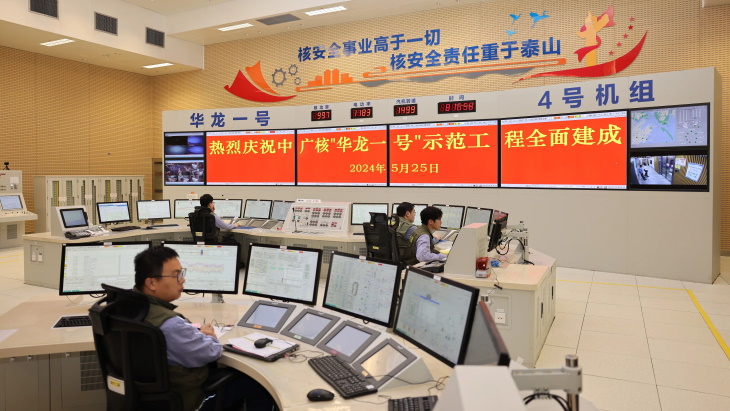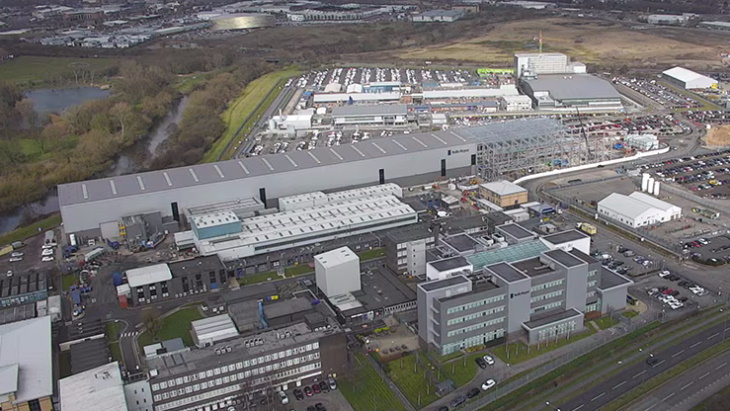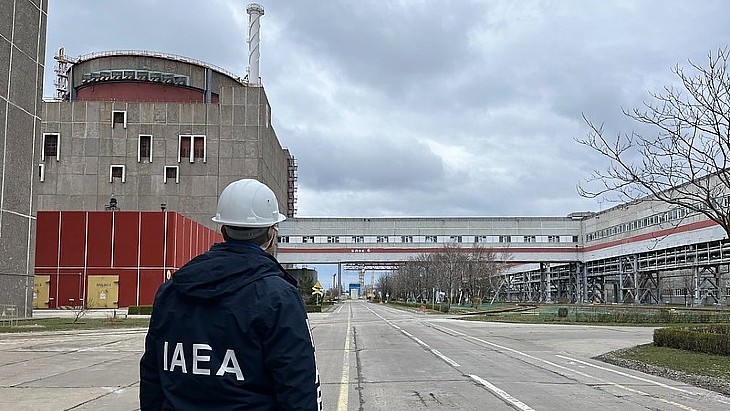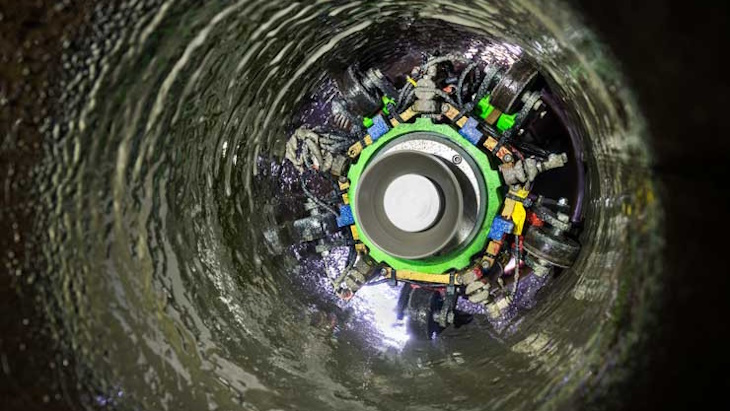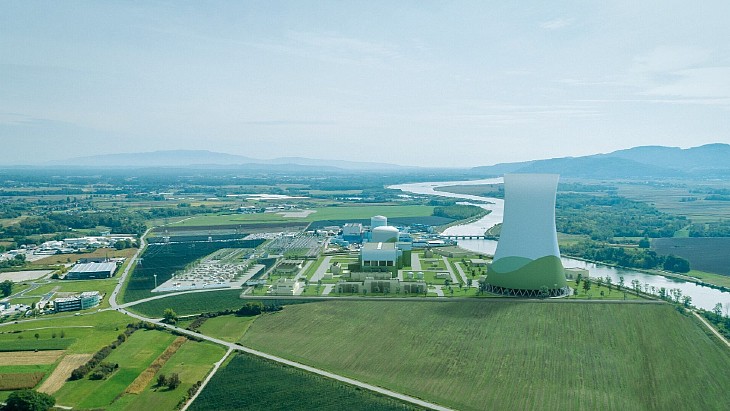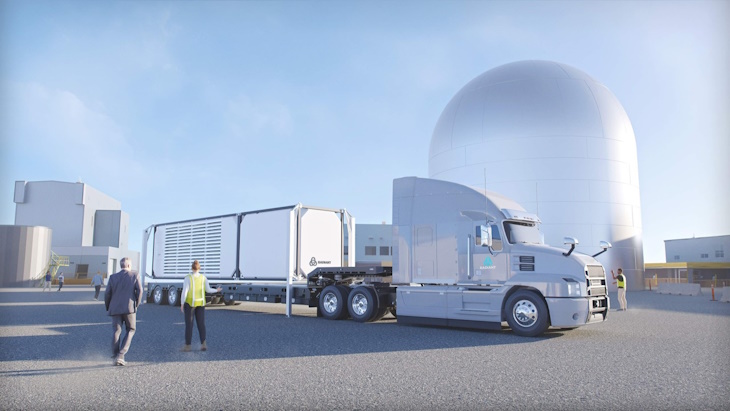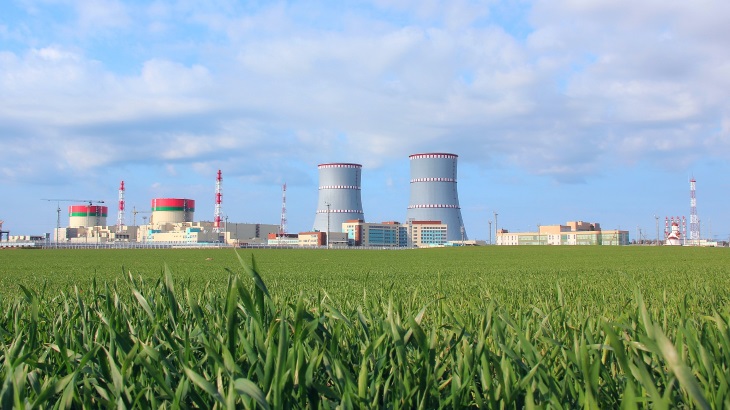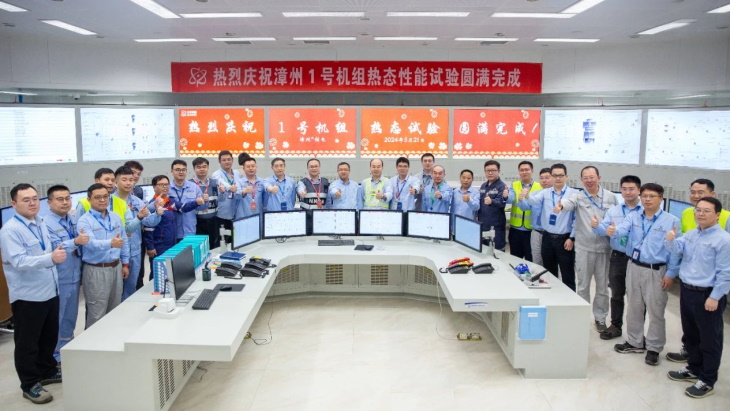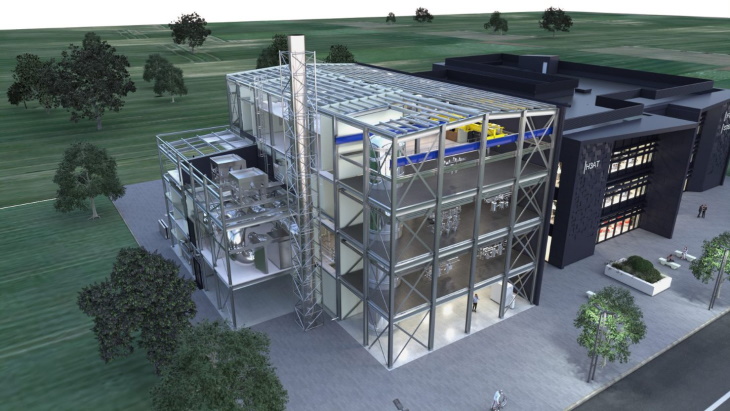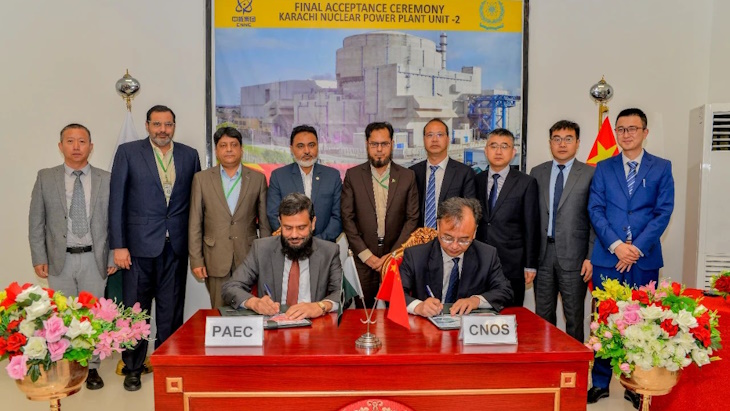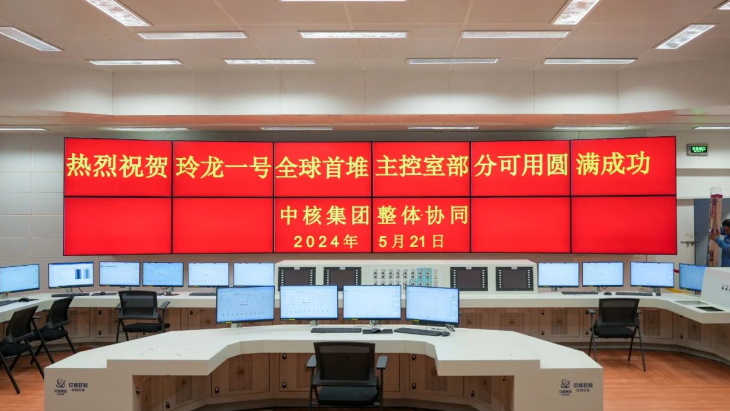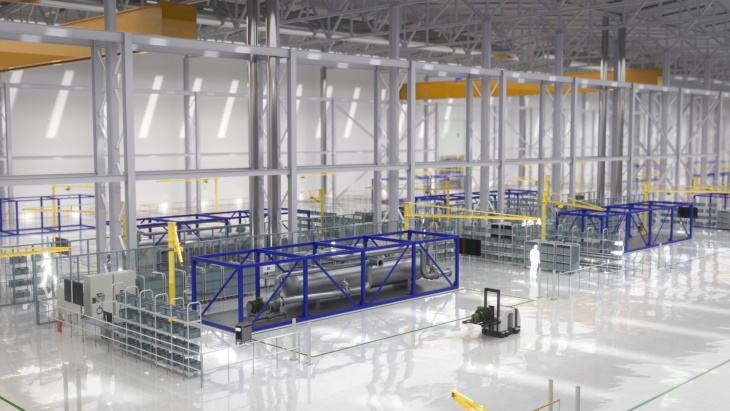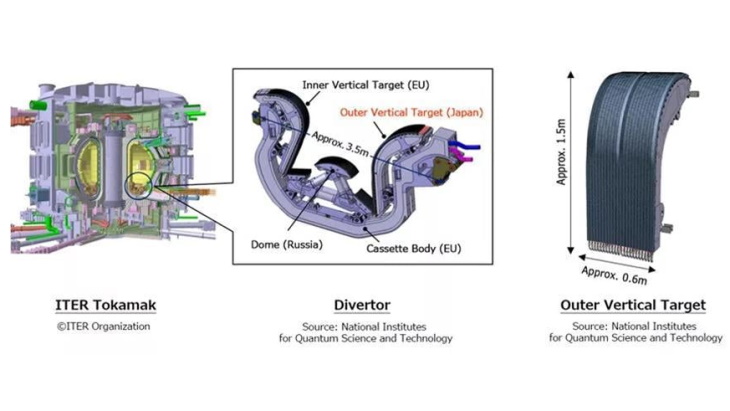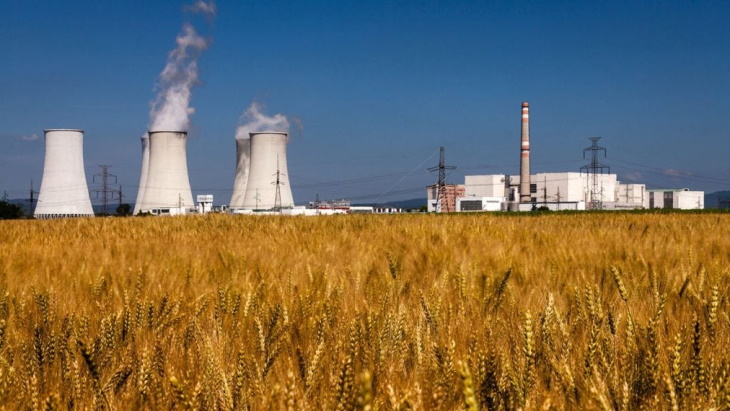Source: https://www.world-nuclear-news.org/Articles/Second-CGN-Hualong-One-completes-commissioning-tes
Unit 4 of the Fangchenggang nuclear power plant in China's Guangxi Autonomous Region has entered commercial operation, China General Nuclear (CGN) announced. The unit is the second of two CGN-designed demonstration Hualong One (HPR1000) reactors at the site.
The 1180 MWe (gross) pressurised water reactor completed a 168-hour trial test run at 8.00am on 25 May, "officially meeting the conditions for commercial operation", CGN said.
First concrete was poured for the nuclear island of Fangchenggang unit 3 - 39% owned by Guangxi Investment Group and 61% by CGN - in December 2015, while that for unit 4 was poured a year later. Unit 3 was originally expected to start up in 2019, with unit 4 scheduled to start up in 2020. Both their start-ups were subsequently postponed until 2022.
However, in January 2022, CGN announced that the start-up of Fangchenggang 3 and 4 had been put back again due to delays caused by the COVID-19 pandemic. Unit 3 achieved first criticality - a sustained chain reaction - on 27 December 2022 and was synchronised with the grid on 10 January 2023. It entered commercial operation on 25 March last year.
China's National Nuclear Safety Administration (NNSA) granted CGN an operating licence for Fangchenggang 4 on 27 February this year, allowing the loading of fuel into the reactor's core to begin. The fuel loading process was completed on 2 March. The reactor reached first criticality on 3 April and was connected to the grid six days later.
CGN said the commissioning of unit 4 "marks the full completion of CGN's Hualong One demonstration project".
"The commissioning of unit 4 of the Fangchenggang nuclear power plant has further verified the safety, maturity and advancement of CGN's Hualong One technology, and accumulated valuable experience that can be used as a reference and replicated for the mass construction of Hualong One," said Cai Zhen, chairman of Guangxi Fangchenggang Nuclear Power Company.
The Fangchenggang plant is planned to house six reactors. The first phase comprises two CPR-1000 units which were put into commercial operation in 2016. Units 5 and 6 are expected to feature Hualong One reactors.
CGN noted that, with Fangchenggang unit 4 now in commercial operation, the number of power reactors in operation it manages (including associates) has increased to 28 units and the installed capacity of nuclear power generating units in operation has increased from 30,568 MW to 31,756 MW.
The first two units of China National Nuclear Corporation's version of the Hualong One design at the Fuqing plant in Fujian province have both already started up. Unit 5 entered commercial operation on 30 January 2021, with unit 6 following on 25 March 2022.
